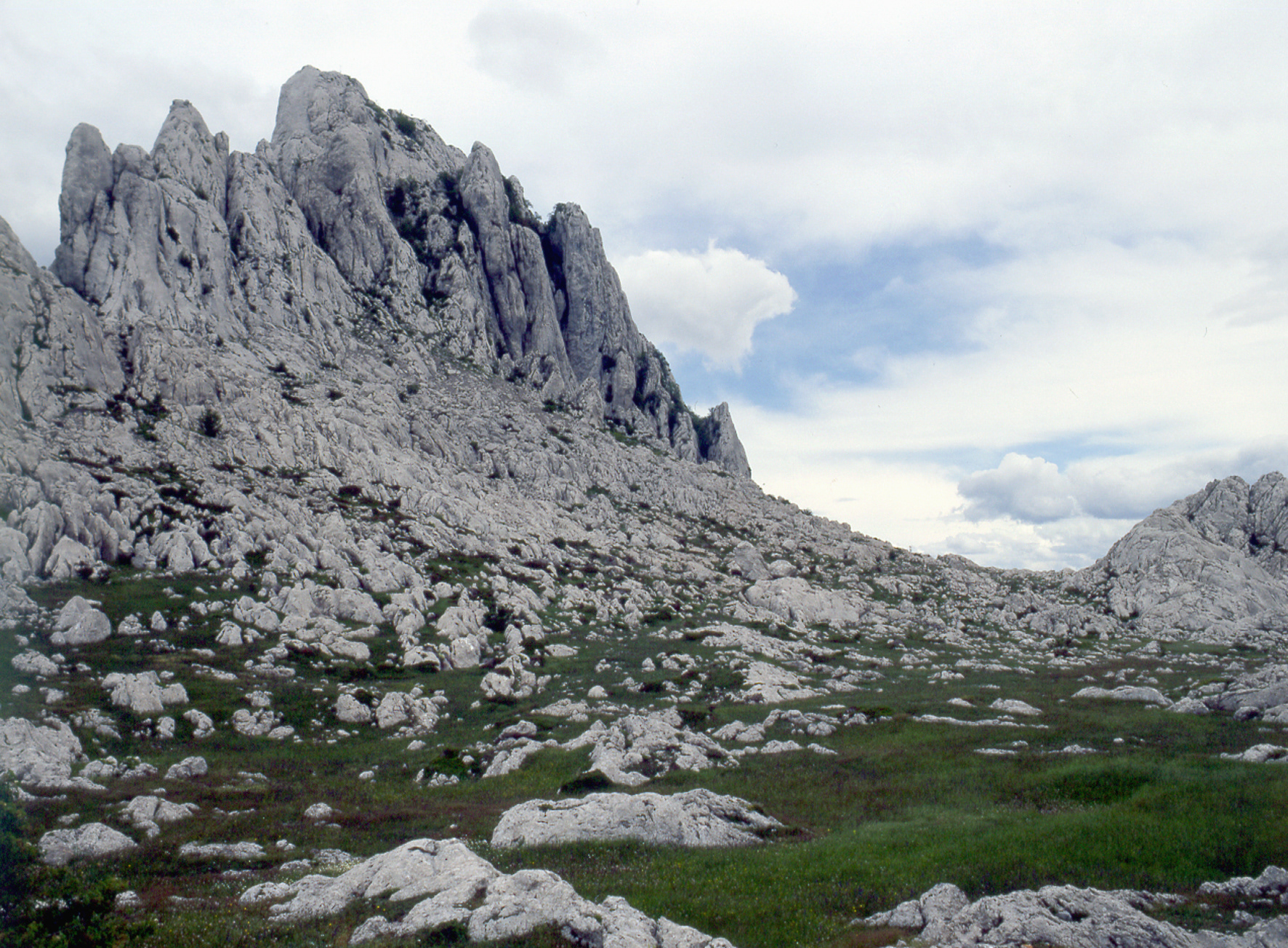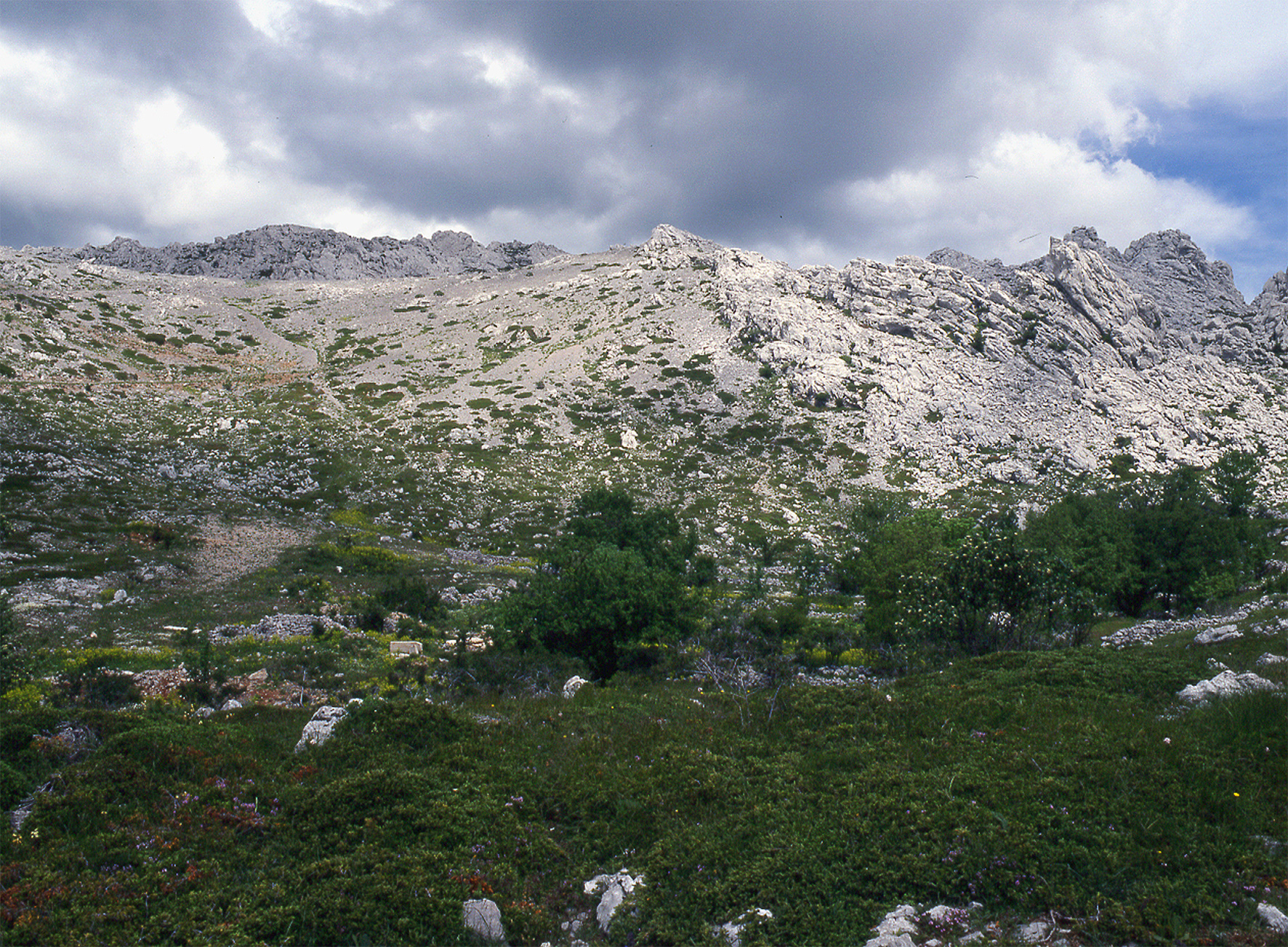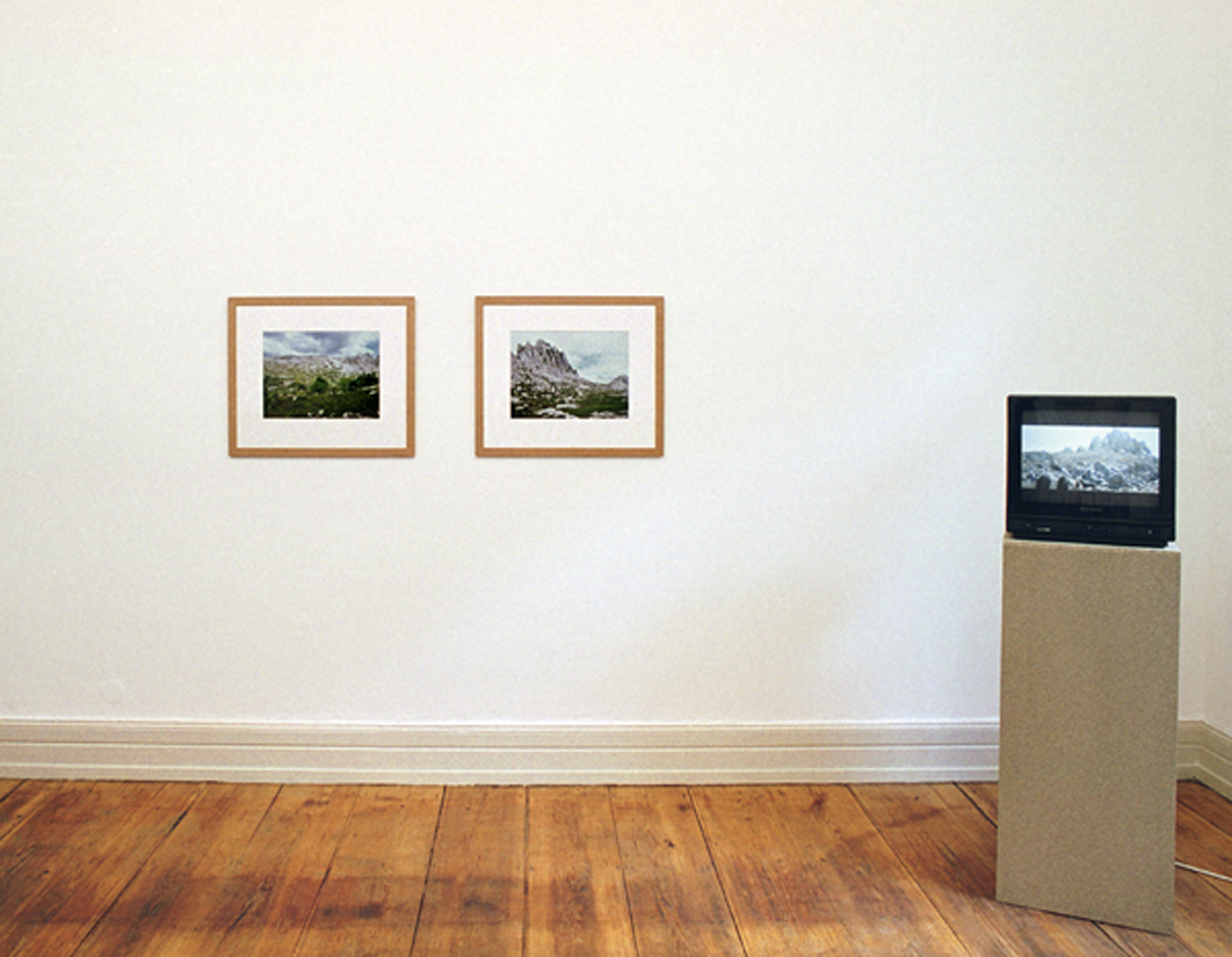Nomansland consists of a video loop and two photographs. The project was realized in a Croatian national park, the landscape of which served as a film set for Karl May films such as "Winnetou" or "Old Shatterhand" in the years of Yugoslavia in 1960. It used to be a cheap country for film productions and also a holiday destination.
In June 2004, for my safety, I took a guide who brought me to the mountains of Tulove Grede. The area is still suspected of being mined as a result of the Yugoslav civil war. In the video I combine my own recordings with the original Karl May footage (Winnetou I and III). Fiction and reality intersect and change. The landscape is no longer just a romantic image, but a response to memory and an invisible threat.
In June 2004, for my safety, I took a guide who brought me to the mountains of Tulove Grede. The area is still suspected of being mined as a result of the Yugoslav civil war. In the video I combine my own recordings with the original Karl May footage (Winnetou I and III). Fiction and reality intersect and change. The landscape is no longer just a romantic image, but a response to memory and an invisible threat.

c-print, 45 cm x 60 cm

c-princ-print, 45 cm x 60 cm

22Wallstr., Andreas Gehlen / Sascha Pohle, Frankfurt am Main, DE , 2004, ( 22Wallstr. was an art space in a private apartment organized by Regina Barunke)
Nomansland
At the foot of the furrowed rocky hill of the Tulove Grede opens the Mali Alan’s plateau at the height of more than 1000 meters. The rough, impressive nature of this mountainous area, today a National Park and a no man’s land between Croatia and Serbia, shows just as little of its military burdened past and topicality as it does of its former function as film set for wild-west scenes in Karl May productions of the 60's and the following years.
Sascha Pohle’s ascent into these “landscapes" which, he states "are not those they assert to be", was accomplished with his accompaniment of a competent guide of the Croatian de-mining organization Hrvatski centar za Razminiranje (HCR). It is a walk the viewer has to join, a film-like experience of the route to the ultimate destination, the place of the final battle of the Indian chief Winnetou (Winnetou III, 189311968), the Dolac Poda Tulom (Big Green Meadow). Contact mines make this area still impassable, therefore a more secure route was decided on which Pohle recorded with a videocamera. the two exhibited photographs mark the beginnng and the end of the route. the video work – a composition of documentary and found- footage material of the movies Winnetou I and III – dodge the layers between fiction and reality in the motive of landscape. Sascha Pohle’s neutral position points out, through taking back the narrator's authority or the dominance of the method of “showing”, a marked inside perspective that produces consciously rough gaps.
Whether it has to do with serious natural research, a romantically transfigured adventure trip or with seeking a trace in a country that has experienced in recent history particular cruelty and confusion, or with the contrary extreme that nature is only an object for his game of fantasies, Pohle's process is always connected. The power of the work “Nomansland” ( leaned on Denis Tanacovic’ awarded movie No Man’s Land, 2002, about the absurd, desolate, or tragic everyday occurrence of war ) lies in these connections: in its contents or the formally disturbing overlap of a documentary realism with the creation of illusion in the potential of filmic alienation.
Text by Regina Barunke